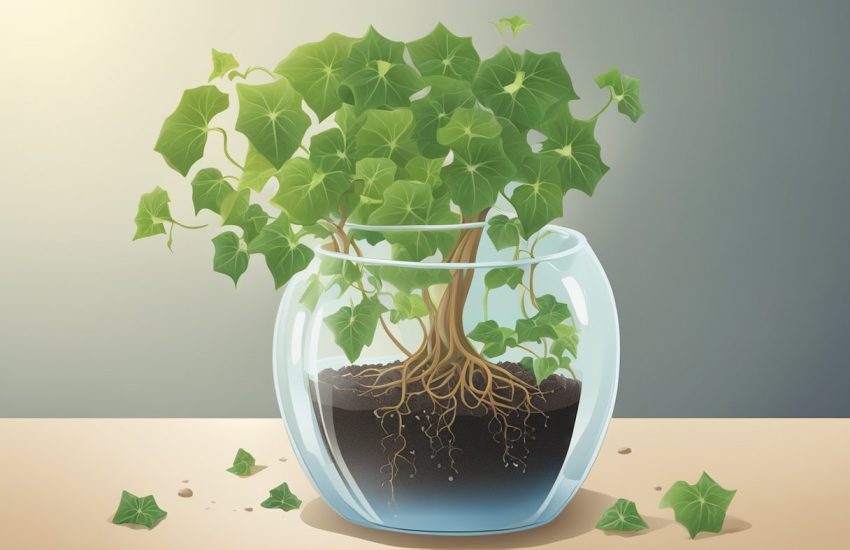Plant That Looks Like the Top of a Pineapple: A Guide to Bromeliads
Plants that resemble the top of a pineapple are becoming increasingly popular among plant enthusiasts. These plants are often members of the bromeliad family and are known for their unique and striking appearance. While they may not produce the sweet fruit that pineapples are known for, they make for great decorative pieces in homes and gardens alike.

The bromeliad family is a diverse group of plants that includes over 3,000 species. Many of these plants are epiphytes, meaning that they grow on other plants rather than in soil. One of the most well-known members of this family is the pineapple, which is native to South America. While pineapples are grown for their sweet fruit, other members of the bromeliad family are grown for their unique appearance, such as those that resemble the top of a pineapple. These plants have leaves that are arranged in a rosette pattern and often have a spiky texture that resembles the leaves of a pineapple. Some species even have leaves that are variegated in color, adding to their visual appeal.
Identifying Pineapple-Like Plants

If you’re looking for plants that resemble the top of a pineapple, you may be interested in the Bromeliad family. These exotic indoor plants are native to tropical America and are known for their unique and striking appearance.
Characteristics of Bromeliad Plants
Bromeliads are epiphytes, which means they grow on other plants or objects, but they don’t rely on them for nutrients. Instead, they absorb water and nutrients through their leaves. They are also known as air plants because they don’t need soil to grow. Most bromeliads are tropical plants that require a lot of sun and water to thrive.
Popular Pineapple-Like Varieties
There are several varieties of bromeliads that closely resemble the top of a pineapple. Here are a few popular ones:
- Eucomis (Pineapple Lily): This plant has broad, strappy leaves that resemble the top of a pineapple. It produces a tall stalk of flowers that look like miniature pineapples.
- Guzmania: This plant has bright red or orange bracts that resemble the top of a pineapple. It produces small flowers that are usually white or yellow.
- Aechmea fasciata (Silver Vase Plant): This plant has long, narrow leaves that curve outward and resemble the top of a pineapple. It produces a tall stalk of pink or red flowers.
- Alcantarea imperialis: This large bromeliad has broad, spiky leaves that resemble the top of a pineapple. It can grow up to 5 feet tall and wide and produces a tall stalk of purple or red flowers.
- Dyckia: This plant has spiky leaves that curl inward and resemble the top of a pineapple. It produces small flowers that are usually yellow or orange.
- Earth Star: This plant has short, wide leaves that resemble the top of a pineapple. It comes in a variety of colors and patterns, from green to red to silver.
Overall, bromeliads are a great choice if you’re looking for plants that look like pineapple tops. They are easy to care for and can add a tropical touch to any indoor or outdoor space.
Cultivation and Care
Growing Conditions and Maintenance
Plants that resemble the top of a pineapple are a great addition to any garden or indoor space. These plants are native to tropical and subtropical regions, including South Africa and Central and South America. They thrive in warm and humid conditions, making them ideal for cultivation in containers or as ornamental plants in the garden.
To grow these plants successfully, they require plenty of sunlight. Ensure that the plants receive at least six hours of direct sunlight daily. If growing indoors, it is essential to provide adequate light to mimic natural sunlight. These plants also require regular watering, but it is important not to overwater them. Allow the soil to dry out slightly before watering again.
To ensure healthy growth, it is recommended to fertilize these plants every two to three months with a balanced fertilizer. Regular pruning is also necessary to maintain the plant’s shape and to remove any dead or damaged leaves.
Propagation and Ornamental Use
One of the easiest ways to propagate these plants is through suckers or offsets. Suckers are small shoots that grow from the base of the plant, and they can be removed and planted in a new container or garden bed. These plants can also be propagated from stem cuttings or by growing them from the top of a pineapple fruit.
In addition to their attractive foliage, these plants also produce ornamental fruit and flowers. The fruit is not edible, but it adds a unique and tropical touch to any garden or indoor space. These plants also produce beautiful flowers in the spring, which attract pollinators and add color to the garden.
Overall, these plants are relatively easy to care for and make a great addition to any garden or indoor space. With proper care and maintenance, they can thrive and provide years of enjoyment.


